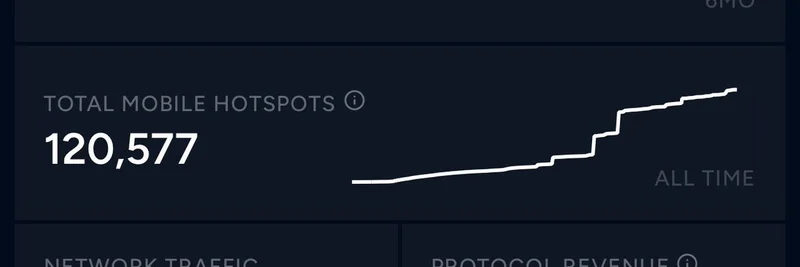In the fast-paced world of blockchain and cryptocurrencies, few voices cut through the noise quite like Hitesh.eth (@hmalviya9 on X). His recent article-style post, titled "If you do not know this you should not be in crypto," has sparked conversations across the crypto community. As someone who's seen the highs and lows of the industry, I can tell you this piece is a must-read for anyone dabbling in tokens—especially meme tokens, which get a special shoutout for their unbreakable tie to human nature.
Hitesh.eth lays it out plain and simple: crypto tokens aren't just digital assets; they're a "psychological battleground" designed to extract hope and turn it into liquidity. Forget utility for a second—these things move on stories, manipulation, and weaponized attention. If you're in memes, this hits home because meme coins thrive on vibes and community hype more than any real-world use case.
The Price Discovery Rollercoaster
One of the core ideas Hitesh explores is the predictable cycle of token price discovery. It starts in the "0-1 stage," where hype rules and adoption is minimal. Prices pump on pure sentiment, communities rally around dreamy futures, but then comes the inevitable correction that shakes out the weak hands.
He references his earlier post on X, breaking it down: short uptrends followed by big drawdowns. The real test is during those dips—projects without genuine demand fade away, while survivors move to the "1-10 stage" with actual adoption kicking in, leading to sustainable rallies.
For meme token enthusiasts, this is gold. Many memes explode on launch hype but crash hard if they can't build lasting engagement. Think about how successful memes like Dogecoin or newer ones evolve beyond the joke into cultural phenomena.
The Hidden Truth Behind Tokens
Hitesh doesn't mince words: most tokens won't make sense in the future. With private companies soon tokenizing equity directly onchain, a lot of current tokens will look like outdated fundraising gimmicks. Exceptions? DePIN (Decentralized Physical Infrastructure Networks, which use tokens to incentivize hardware contributions) and parts of DeFi (Decentralized Finance, where tokens enable governance and liquidity provision).
He quotes his own take from another post and echoes VC sentiments that the "token game" is shrinking. But here's the kicker for our audience at Meme Insider: "meme coins and trash tokens are not going away. They will multiply because gambling is human nature."
Yes, memes are here to stay precisely because they're unapologetic about being speculative fun. No pretending to be "long-term investments"—it's pure adrenaline, and as regulations tighten, the line between gambling and investing will sharpen.
Psychological Traps and Emotional Engineering
Diving deeper, Hitesh describes tokens as "promissory data strings" engineered to manipulate behavior. Vesting schedules, incentives—they're all emotional hooks targeting fear, greed, and desire. People don't buy tokens; they buy escapes from reality.
From his post on token mechanics, he explains how teams release supply strategically to create artificial demand. Coordination among VCs, market makers, and influencers funnels retail in as the last link in the chain—exit liquidity.
In the meme world, this plays out with pump-and-dump schemes or influencer shills. But savvy players front-run narratives, entering early before the hype train leaves the station.
When Tokens Become a Curse
Speculation, not utility, fuels growth, says Hitesh. Tokens die without attention, which must come before adoption or revenue. Many projects launch incentives to fake traction, but when users fixate on price over product, it's game over.
Referencing his thoughts on tokens as a "deathbed" for projects from this post, he warns that incentives should bridge to real demand, not replace it. Otherwise, founders get trapped by the chart, and the vision crumbles.
Meme tokens often skip the "utility" pretense altogether, which ironically might be their strength—they live or die on community attention alone.
Exit Liquidity: Don't Be the Punchline
"If you do not know who you are buying from, you are exit liquidity." Harsh but true. Hitesh outlines the insider coordination: VCs get in cheap, projects list at inflated valuations, and retail rushes in late, providing exits for the early birds.
His advice on thriving: master a process, climb the chain, and let alpha come to you. For meme hunters, this means doing your own research, spotting narratives early, and avoiding borrowed conviction from YouTubers or shills.
The Great Crypto Divide
Looking ahead, crypto splits into regulated surveillance and raw anarchy. Tokens with fake demand will purge, surviving only if tied to real adoption, cash flow, or purpose.
Hitesh quotes his post on the divide, contrasting speculative Wild West with protected investments. Memes? They'll thrive in the anarchy side, privacy-focused and decentralized.
He wraps with a call to build conviction: tokens mirror your greed and illusions. Survival demands discipline, awareness, and playing ahead of the crowd.
At Meme Insider, we see this as a blueprint for navigating meme tokens. They're not just jokes—they're belief machines in a speculative arena. If you're building or investing in memes, heed Hitesh's warnings: understand the game, or become someone else's liquidity.
Check out the full article on X for the unfiltered wisdom. What's your take on the future of meme coins? Drop your thoughts in the comments!


